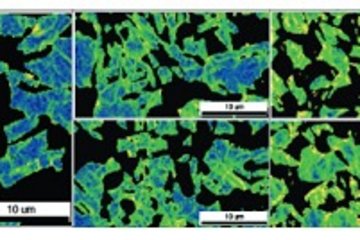All genres
1141.
Talk
Effect of interstitial carbon on the magnetic structure of fcc iron: Towards an ab-initio understanding of austenitic steels. DPG Spring Meeting 2009, Dresden, Germany (2009)
1142.
Talk
The free energy of iron: Integrated ab initio derivation of vibrational, electronic, and magnetic contributions. DPG Spring Meeting 2009, Dresden, Germany (2009)
1143.
Talk
Role of the parasitic Mg3N2 phase in post-growth activation of p-doped Mg:GaN. DPG Frühjahrstagung, TU Dresden, Germany (2009)
1144.
Talk
Multi-physical alloy approaches to solid solution strengthening of Al. Deutsche Physikalische Gesellschaft 2009, Dresden, Germany (2009)
1145.
Talk
Application of an eight-band k.p model to study III-nitride semiconductor. DPG Spring Meeting 2009, Dresden, Germany (2009)
1146.
Talk
Ab-initio calculations of hyperfine parameters for various Si-dangling bond models. DPG spring meeting, TU Dresden, Germany (2009)
1147.
Talk
Role of anharmonic contributions for the elasticity of ice. Fruehjahrstagung der Deutschen Physikalischen Gesellschaft, Dresden, Germany (2009)
1148.
Talk
An atomistic study of low-C tetragonal Fe-C states. DPG Spring Meeting 2009, Dresden, Germany (2009)
1149.
Talk
A multiscale study of the Hydrogen-enhanced local plasticity mechanism (HELP). Fruehjahrstagung der Deutschen Physikalischen Gesellschaft 2009, Dresden, Germany (2009)
1150.
Talk
Understanding and designing engineering materials based on ab initio thermodynamics. Seminar, PennState University, USA (2009)
1151.
Talk
First principles determination of phase transitions in magnetic shape memory alloys. APS March Meeting, Pittsburgh, PA, USA (2009)
1152.
Talk
Investigation of group III-nitride semiconductor nanostructures using an eight-band k.p formalism. APS March meeting, Pittsburgh, PA, USA (2009)
1153.
Talk
Role of anharmonic contributions for the elasticity of ice. March meeting of the American Physical Society (APS), Pittsburg, USA (2009)
1154.
Talk
A multiscale study of hydrogen embrittlement in metals: Revisitting the Hydrogen-enhanced local plasticity mechanism. APS March Meeting, Pittsburgh, PA, USA (2009)
1155.
Talk
Fully ab initio supercell corrections for charged defects. APS march meeting, Pittsburgh, PA, USA (2009)
1156.
Talk
Materials design based on ab initio thermodynamics: Development of accurate and efficient multiscale strategies. IWOM3 – International Workshop on Multiscale Materials Modeling, Berlin, Germany (2009)
1157.
Talk
Large anisotropic adatom kinetics on nonpolar GaN surfaces: Consequences on nanowire growth. PDI Topical Workshop on MBE-grown Nitride Nanowires, Berlin, Germany (2009)
1158.
Talk
Ab initio up to the melting point: Anharmonicity and vacancies in aluminum. APS March Meeting, Pittsburgh, PA, USA (2009)
1159.
Talk
Multiscale Modeling of the Mechanics of Metallic and Biological Polycrystals using Ab Initio and Continuum Methods. MMCM 2009 Colloquium on Multiscale Methods in Computational Mechanics, Rolduc, The Netherlands (2009)
1160.
Talk
Ab initio investigation of temperature dependent effects in magnetic shape memory Heusler alloys. SPP 1239 Convention, Duisburg, Germany (2009)











